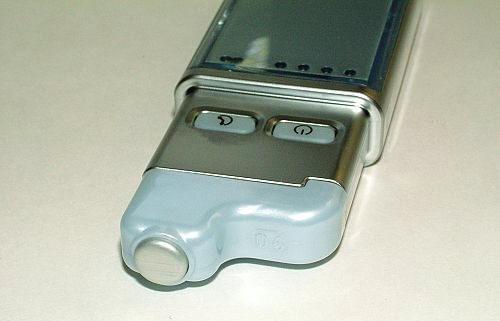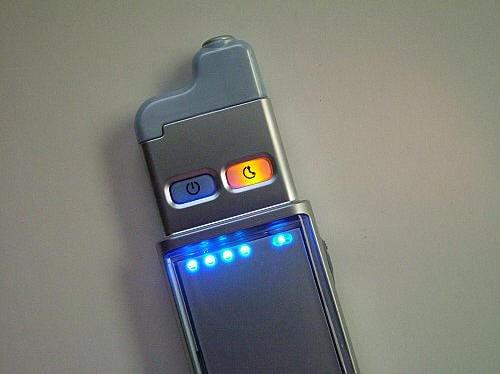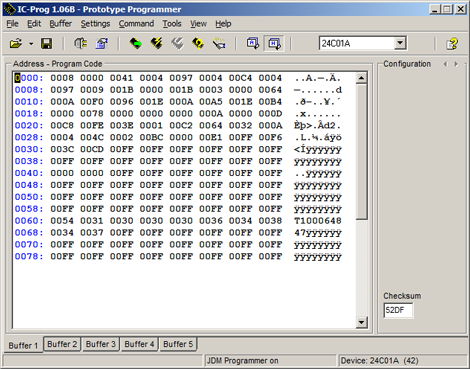We decided to pick up a Zeno Acne Treatment system from eBay recently, due to very good sounding reviews. The device has a tip which heats up to a designated temperature, and you are to hold it to a trouble spot on your face for a few minutes while it counts down. This is all great, but the tips are meant to run out after 45 to 120 uses depending on the tip. Before we ran it completely I took did some searching around on the web, and supposedly there is a EEPROM inside. I carefully disassembled the tip and discovered a 24C01A EEPROM was in fact in there!
Some simple wire tracing and a 10 pin connector I had all the contacts all traced out. I soldered the leads directly to a 8-pin dip riser, so I could easily plug it into my PIC / EEPROM JDM serial programmer. This was a perfect success, I was now able to read and write to the Zeno tip.
I dumped the EEPROM in IC-Prog after a sequence of uses, and found that there was a byte that would count up to 0x00, as another counted down from 0xFF. I concluded that if I were to set the first at 0x3C (60 in decimal) and the second at 0xC3 (255-60=195), the tip would show a full 60 uses. I flashed the tip, and we have 4 lights. This indicated the tip was between 75 and 100% full. Wonderful!
This worked so well, I started accepting tips over eBay for $5 to refill their digital use. I’ve gotten dozens of tips in the mail, and by accident we got sent a Zeno mini tip. Since the tip was empty and dead to them, I checked to see if I could disassemble it and TRY to refill it. They agreed, so onward we go. This tip uses a flat 6 male pin receiver, which is much more of a common jack. The tip was simple to dismantle, I photographed both sides of the board and reassembled everything. I then created a new adapter for use in my serial programmer. Once again, success.
I haven’t really studied most of the other bytes contained in the EEPROM, but I know that there are a few which determine what the maximum count the tip should ever contain, which is how we have tips in 45, 60, 90, 120 and 250 counts. There are also some bytes that appear to be a checksum of sorts, and a unique serial number. It’s interesting to see that the company actually put unique numbers on every tip they manufactured.




